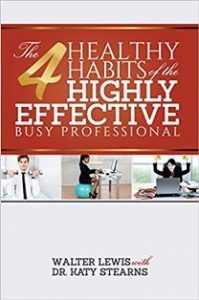Sharlyn J. Lauby's Blog, page 133
July 27, 2017
The Culture Series [Part 1] – Defining Diversity and Inclusion in Today’s Business Climate
Diversity can have many definitions. Organizations often define it in the context of their culture. Generally speaking, diversity refers to the qualities, experiences, and work behaviors that make individuals unique. This includes age, gender, race, religion, ethnicity, disabilities, income, etc. It can also touch upon federal, state, and local equal employment opportunity laws, but…that’s for another post.
If diversity deals with those aspects that make individuals unique, inclusion is the ability for organizations to make every person feel welcome, respected, supported, and valued. At this year’s WorkHuman Conference, I heard a quote from Verna Myers that explains it well, “Diversity is being invited to the party. Inclusion is being asked to dance.” So, inclusion is the extent to which the organization can realize a benefit of having such a workforce.
It’s very difficult to discuss diversity and inclusion in today’s business environment without including a conversation about culture. Culture is defined as a collection of commonly-held traditions, beliefs, and behaviors by a group of people. Culture is a part of every organization and, in many workplaces, it’s never documented.
Needless to say, every organization is diverse. Every business is made up of unique individuals. It’s true that we might share some common qualities and experiences with others, but not all. The real question is the organization’s ability to create an inclusive culture. For a company to achieve its business goals, they must recognize and leverage the talent within the company. That means being able to create a culture that is empowering, supportive, and in turn, allows people to do their best work.
Heather Brunner, CEO of WP Engine, said during the 2017 Great Place to Work Conference that organizations must embrace diversity and inclusion to achieve employee engagement. It’s only logical that engagement is contingent upon employees feeling involved and committed to their work as well as to the company mission and values. If organizations want to create an inclusionary workforce, there are three significant business opportunities to consider.
Innovation: The key to unleashing organizational creativity and innovation is by engaging employees who have a wide variety of skills and talents. For example, consider the five generations of employees currently in the workplace and their various points-of-view. A tremendous opportunity exists to create different ideas and expanded goals for the business.
Buying Power: According to the Selig Center for Economic Growth, the buying power of minority communities in the United States has greatly outpaced that of white consumers. For example, the Hispanic market is expanding rapidly and there are several untapped consumer segments such as the lesbian, gay, bisexual, and transgender (LGBTQ) market.
Sales and Profits: A study published in American Sociological Review indicated that companies reporting the highest levels of racial diversity brought in nearly 15 times more sales revenue on average than those with the lowest levels of racial diversity. The same study indicated that gender diversity accounted for a difference of approximately $500 million in sales revenue.
Lew Platt, former CEO of Hewlett Packard, summarized the business case for diversity best. “I see three main points to make the business case for diversity.
1) A talent shortage that requires us to seek out and use the full capabilities of all our employees.
2) The need to be like our customers, including the need to understand and communicate with them in terms that reflects their concerns. And,
3) Diverse teams produce better results.”
CEOs continue to say that recruiting and retaining talent is their number one priority. As the unemployment rate continues to drop, and we start to hear about “full employment”, companies are challenged to find skilled individuals to fill open positions. The proverbial “War for Talent” is back.
Successful organizations realize that their competitive advantage is having employees who are engaged with the company. Engagement happens when employees feel they’re included. When the company is operating at its best, employees are empowered to take care of customers and enabled to solve problems and remove obstacles.
Image captured by Sharlyn Lauby in the Wynwood Arts District of Miami, FL
The post The Culture Series [Part 1] – Defining Diversity and Inclusion in Today’s Business Climate appeared first on hr bartender.






July 25, 2017
HOW TO: Turn Your Employee Engagement Survey Results into Action
(Editor’s Note: Today’s post is brought to you by Readex Research , which provides expert survey services to help businesses understand their internal and external customers. Their services include employee experience surveys. Enjoy the post!)
Let’s say your organization has conducted your employee engagement survey. You’ve used the principles of survey research to design the survey. The survey was implemented well and received high participation.
Now, employees will expect to hear something about the results.
I’ve always said that the absolute worst thing companies can do is ask employees for their thoughts and then do nothing with the information. The whole purpose of a survey is to take action.
Action demonstrates that the company is listening to employees.
It shows that the company is open to new ideas from every level of the organization.
Taking action creates employee engagement.
Trust builds between employees and the company when action is taken.
Just to be clear, taking action doesn’t mean that organizations have to say “yes” to every suggestion. But it also doesn’t mean you can say “no” either. Once the employee engagement survey results are in, organizations have three action steps:
Step 1 – Digest the information
It’s very easy to get consumed by the wealth of information provided in surveys. Organizations need to be careful they don’t fall into the trap of analysis paralysis. It’s important to be mindful of the things you learn that need to be changed/improved. We can have built-in biases and skepticism of overall survey results that lean in a bad or negative direction.
I asked Readex CEO Jack Semler if there’s a formula for digesting survey information. “Digesting survey results is kind of like writing a paper. You write and write, put the paper down, and the next time you pick it up you invariably find something to change or a new idea. Well, it’s the same thing when you are reviewing survey results. The second and even third time around there are new ideas that pop up or you see what you saw before in a different way. There’s nothing wrong with taking time to digest and reflect.”
Equally as important is not spending enough time processing the responses. Don’t let initial reactions drive your process. Review the results, then put them down for a while, and review them again. Semler says there’s no overarching rule of thumb on how much time to allocate. “It could depend on the length of the survey (how much info there is) and any deadlines from other stakeholders on reporting. I would say two to three reviews is typically sufficient to gain clarity.”
Step 2 – Communicate the results
After HR has processed the survey results internally, share information with key executives first, before sharing with the entire workforce. The group can then decide on how and how much of the results will be shared with the employees in advance. If specific feedback needs to be shared with an individual, schedule a one-on-one meeting to deliver the results. It shows that the company values the feedback as well as the person it’s being given to.
When it comes time to present the results to employees, think about the best way to conduct this meeting. It shouldn’t be like the weekly staff meeting. Conveying employee survey results is different and, dare I say, special.
I once worked for a company that did something unique for employee survey meetings that worked well. We called it a “max-mix” meeting because it provided maximum participation by a mixture of people. Here’s the meeting agenda:
The senior management team delivered an overview of the company results. Speaking of presenting results to employees, consider the use of graphs, charts, and other visuals to show results. Data tables and numbers aren’t always as presentation-friendly. For some creative inspiration in designing visuals, check out the TEDx talk “How to Avoid Death by PowerPoint”.
Then, employees worked in groups to develop questions for the senior management team. Each team designated a spokesperson to ask the question. Senior management didn’t know who initiated the question. And the spokesperson was typically someone who was comfortable speaking in front of groups.
For any questions that there wasn’t enough time for, were put on index cards. HR was responsible for getting the answers and posting the responses in writing for all employees to view.
Step 3 – Make decisions using the results
After holding the all-employee meeting, let employees know how and when action items from the survey will be addressed. It’s realistic to think that some suggestions can and will be implemented right away, others might need further research, and some will not be feasible for a variety of reasons.
Senior management will want to decide how employees will learn when survey suggestions have been implemented or are under consideration (i.e. company email, employee newsletter, on the website, or multiple channels). They will also want to decide how to communicate when suggestions will not be considered (i.e. department meetings, employee town halls, or possibly one-on-one conversations.)
Last and certainly not least, HR and senior management need to thank employees for their participation and communicate details for future surveys. If employees feel their feedback was openly accepted, carefully considered, and acted upon, they will continue to offer feedback.
Three key steps to turn employee engagement survey results into actionClick To Tweet
Employee Engagement is Good for Business
I’d like to think that I don’t have to convince anyone that employee disengagement is bad for business. We’ve all seen the Gallup report stating that actively disengaged employees cost the U.S. $550 billion annually in lost productivity.
Organizations must address employee engagement and take steps to improve it. But instead of guessing about what to do, survey employees and find out what they’re thinking. Then do something.
Readex has created a series of white papers to help with your employee engagement survey design and implementation. You might want to bookmark these links for future reference:
“5 Questions to Ask Yourself about Employee Engagement Surveys”
“6 Guidelines for Employee Engagement Survey Design”
“3 Tips for Presenting Employee Engagement Survey Results”
The post HOW TO: Turn Your Employee Engagement Survey Results into Action appeared first on hr bartender.






July 23, 2017
Don’t Contact My Boss for a Job Reference – Ask #HR Bartender
We’ve talked about the job reference before on HR Bartender, but this is a new situation. What do you say if the company you’re interviewing with wants to speak with your last boss and you’d rather they didn’t…
Hi Sharlyn! I am in a pickle and am reaching out to all the resources I have to get some help. Although I quit my last job, my boss and I did not leave on the best of terms, and I would not want her to be a reference for me. I sent references per the request of a company who interviewed me, but they came back and asked if they could speak with her. I get the feeling if I don’t give my previous boss as a reference, they will think that something is fishy, and won’t offer me a job. Any advice? Many thanks and I hope you’re having a great day!
There are several situations here that the reader has no control over. For instance, if the reader left the company on the best of terms and the boss was willing to give a glowing reference, sometimes they aren’t able to. Many companies have policies that say managers cannot provide references for former employees. So, it’s possible that if a company said, “We’d like to chat with your last manager.”, they wouldn’t be able to.
(Side note: If you’re concerned about giving a job reference, we did a two-part series on job references a couple of years ago that you might want to check out. Part one of the series addresses the legal aspects of giving job references . And the second part is on the best way to leverage references in your job search .)
But back to the reader note. Let’s say the manager is able to give a job reference if they choose. It’s also possible that the boss feels badly about not having a good relationship with one of their employees. It could be embarrassing for them to have to tell another company that they didn’t get along with an employee. So, the manager says as little as possible OR says something positive when asked to provide a reference.
In both of those examples, candidates have very little control over the situation and what others say. What candidates do have control over is what they say.
Personally, when faced with these types of decisions, I’ve always leaned toward “honesty is the best policy”. I know it sounds very cliché-ish but, I do not believe it’s realistic to think that everyone will get along at work. It’s how you handle those situations that defines your professionalism and can make you stand apart.
So, I would figure out a way to say, “I’m happy to give you my former boss’ contact info. We didn’t always see eye-to-eye, but we always put our differences aside to do what’s best for the organization.” Or whatever words makes sense for you. The point being that, if you concoct a story, you will always have to remember that story. Remembering the truth is much easier.
To me, the big takeaway from today’s reader question is to think about the answer to this question now. What would you say if someone wanted to speak to a person about your work and you didn’t really want them to? Practice saying your response out loud every once in a while, so it sounds comfortable and not scripted.
And for those individuals who might end up on the receiving end of a phone call someday, being asked to provide a reference is a huge responsibility. It has consequences for you and the person you’re providing a job reference for. This isn’t the time to air petty grievances. Job references are about accuracy and professionalism.
Image captured by Sharlyn Lauby after speaking at the 2017 Saba + Halogen TalentSpace Live Conference in Phoenix, AZ
The post Don’t Contact My Boss for a Job Reference – Ask #HR Bartender appeared first on hr bartender.






July 21, 2017
Bookmark This! Change Management Edition
I’ve been hearing lots of conversation about change. Whether it’s organizations that need to change OR departments that want to be more agile so they can respond to change OR individuals who want to create a change in their lives. Change is hard. Even when we want it. Typically, change involves developing new habits and routines.
If change wasn’t hard enough, the speed in which we must adjust to change can be even more difficult.
So, I wanted to put together a list of articles and resources that you could bookmark (hence the title, bookmark this) and refer to it when you’re looking for information about change.
To me, being able to manage change is one of the key components in self-management. It’s a little different from change management, which I consider to be an organizational process. But it is change and we must learn how to deal with it.
Speaking of organizational processes, a few years ago, I had the opportunity to interview Dr. John Kotter on creating organizational change. Lots of good reminders here whenever we’re faced with implementing change in the workplace.
I ran across an email from this Spring that I wanted to share. At this year’s TAtech Congress, I heard Britt Andreatta speak about brain science. Great speaker! After the event, she sent us a link to her online training courses on Lynda.com (a LinkedIn company) including Organizational Learning & Development and Leading Change. Oh, and if you don’t have a Lynda.com account, Britt shared this link for you to access a 30-day free trial here: https://www.lynda.com/trial/Britt_Andreatta.
I like having processes or steps to help me walk-through a change. VUCA is an acronym that can help. It stands for volatility, uncertainty, complexity, and ambiguity. It was introduced by the U.S.Army in the 1990s but businesses are starting to adopt it.
If you find that speed and change are creating stress, I like the techniques that Srikumar Rao shared about reducing individual stress levels at work.
In addition, I found these strategies for handling burnout to be helpful. We all manage stress and burnout differently.
Change management on a personal and professional level can be stressful. Managing change within your organization can be difficult. The good news is there are tools to help us, whether it’s an article, online class, or finding a coach to discuss what’s happening. The important part is find the way that works for you.
Image captured by Sharlyn Lauby after speaking at the 2016 MBTI Users Conference in San Francisco, CA
The post Bookmark This! Change Management Edition appeared first on hr bartender.






July 20, 2017
Human Resources: 2017 Changes for Form I-9
There’s a lot happening in the news. Regardless of your politics, our legislators are talking about immigration, health care, elections, and much more. It can be a challenge to keep up with it all.
For example, did you know that the U.S. Citizenship and Immigration Services (USCIS) office just released a new version of Form I-9? I didn’t know this change was coming until I was in New Orleans at the Society for Human Resource Management (SHRM) Annual Conference.
Back in 2013, Equifax Workforce Solutions helped us understand proposed changes to Form I-9. Because they were so helpful, I asked if they would give us an update and luckily Jason Fry, Sr., director of product management at Equifax Workforce Solutions said “yes”.
Jason, I know we’ve covered this before, but briefly tell readers the purpose of the Form I-9.
[Fry] Form I-9 as well as the corresponding process that employers must go through, is intended to prove identity and eligibility to work in the United States.
I know that a new Form I-9 was just released. What changes were made to the Form?
 [Fry] This is the second new Form I-9 to be released in the past 12 months. We reported in a previous blog post that the new version of Form I-9 was planned to include changes to allow entrepreneurs seeking to enter the country under the ‘International Entrepreneur Rule’ (aka IE Rule) to present their foreign passport and I-94 as List A documents in Section 2.
[Fry] This is the second new Form I-9 to be released in the past 12 months. We reported in a previous blog post that the new version of Form I-9 was planned to include changes to allow entrepreneurs seeking to enter the country under the ‘International Entrepreneur Rule’ (aka IE Rule) to present their foreign passport and I-94 as List A documents in Section 2.
However, on July 11, a notice was published in the Federal Register regarding a delay in the effective date to the IE Rule to open it up for additional comments. This delay means that the planned updates to address the IE Rule were not included in the new version of Form I-9.
On Monday, July 17, 2017 the new Form I-9 was released and changes include:
Revision to the instructions and update to the list of acceptable documents to include the Department of State’s Form FS-240 Consular Report of Birth Abroad to List C,
Changes to language in the instructions related to ‘the end of’ when describing when the Form I-9 must be completed, and
Revision to reflect the Office of Special Counsel for Immigration-Related Unfair Employment Practices (OSC) name change to the Immigrant and Employee Rights Section (IER) in the Department of Justice’s Civil Rights Division.
How long do employers have to implement the new Form?
[Fry] The new Form was published July 17, 2017, but employers have two months to transition to the new form. Employers will have until September 17, 2017 to begin using the new version of the Form I-9. After September 17, 2017, all previous versions of Form I-9 will become invalid.
With this change taking place, is this a good time for employers to consider a Form I-9 Audit? Why or why not?
[Fry] It is always a good time for employers to consider a Form I-9 audit. In fact, when auditing Forms I-9 employers should be making corrections in accordance with the law when the I-9 was completed. This means employers do not need to wait until they have transitioned to the new version of Form I-9 to begin uncovering and remediating the risk in their I-9 database.
There are several factors that make I-9 compliance more critical now than ever in the past. Employers need to make sure they have their I-9s in order to mitigate their compliance risk.
You won’t have time to fix your I-9s when Immigration and Customs Enforcement (ICE) comes knocking on the door. Once ICE serves a Notice of Inspection (NOI) employers have as few as 3 business days to produce documents for audit.
You definitely have risk lurking in your I-9 archive. According to an industry attorney at Jackson Lewis P.C., on average, 60 – 80 percent of paper I-9s create risk as they are either missing, incomplete, or have errors.
If you haven’t audited your I-9 files recently, you may still be retaining Forms that are past the retention requirements. Employers will incur penalties for ALL errors, even if they should have been purged months or years ago.
It will cost you if you don’t address those issues now. Effective August 1, 2016, penalties nearly doubled, and this new fine structure is applicable to any violations incurred after November 2, 2015.
ICE is cracking down. Homeland Security is requesting 10,000 new ICE officials and ICE audits are expected to triple.
If an employer wants to do an audit, what are 2-3 things to consider?
[Fry] The thought of performing an internal I-9 self-audit can be overwhelming. But there are three steps employers can take to help streamline the process:
Optimize – As you are auditing your Forms I-9, purge those that have met retention requirements. This will help eliminate risk from errors on those Forms and save you and your team the unnecessary time and energy of remediating any issues for documents past the required retention date. When employers are audited they are at risk for all I-9s in their database, regardless of whether an I-9 has met retention requirements. If it’s being retained because of improper data/form retention hygiene, it is subject to an audit and equally at risk for penalties and fines.
Prioritize – Sort and prioritize your issues to help focus resources on the most critical issues or the issues that are most easily corrected. The Department of Justice and Department of Homeland Security offered joint guidance to help employers perform an internal audit along with proper procedures for correcting errors and omissions.
Digitize – Go green plus leverage an automated audit and remediation solution that efficiently and thoroughly reviews your entire I-9 archive for issues, providing simple tools to guide your employees through the correction process while delivering a comprehensive electronic audit trail. And be sure to implement a compliant electronic I-9 management system moving forward so you aren’t creating new risk every time you hire a new employee!
My thanks to Jason and Equifax Workforce Solutions for keeping us current on this issue. If you want to learn more about the updates to Form I-9, be sure to check out the Equifax Workforce Solutions blog.
As human resources professionals, I know we spend a lot of time focused on hiring, engaging, and retaining the best talent. Compliance changes, like the ones proposed on Form I-9, can seem like a pesky fly at a summer picnic. But sending the message to our employees that the organization makes staying complaint a priority is a good thing, which sends a positive message that employees can be proud of.
The post Human Resources: 2017 Changes for Form I-9 appeared first on hr bartender.






July 18, 2017
Your Organization’s Last Differentiator: Human Capital
(Editor’s Note: Today’s post is brought to you by our friends at Kronos , a leading provider of workforce management and human capital management cloud solutions. The Boston Business Journal recently named Kronos as one of the Best Places to Work in Massachusetts . It’s their eighth time on the list and third consecutive year in the top three. Congratulations to them! Enjoy the post.)
The weather wasn’t’ the best at this year’s Society for Human Resource Management (SHRM) Annual Conference. Lots of wind and rain. When I travel and the weather is ugly, I have a tendency not to explore the city as much and prefer to hang out at my hotel. Thank goodness, the service was great! The hotel bartender was friendly and made some great recommendations off their menu.
When I worked in hotels, we were keenly aware that our competitive advantage was our employees. All hotels have beds and showers. Granted, some of them are more luxurious than others. But their real differentiator were the employees. They make or break a guest’s hotel stay.
I was reminded of how much people play a role in our business strategy after chatting with Gregg Gordon, vice president of Kronos’ data science practice group. He has just published his second book, “Your Last Differentiator: Human Capital”. I asked if he would share a little bit of the book with you and luckily, he said “yes”.
Gregg, tell us briefly what sparked you to write this book. On some level, I’d like to think that organizations understand that people are a key differentiator. What is it about human capital that companies need to focus on?
 [Gordon] It began with a curiosity around how these startups were using technology to upend existing markets. As I began learning about the history of the organizations, it was much less about technology than it was about people who have great ideas, are relentless in execution, and have the grit to overcome lots of obstacles. The most successful organizations, both startups and incumbents, have a clear purpose their employees and customers identify with and can get passionate about.
[Gordon] It began with a curiosity around how these startups were using technology to upend existing markets. As I began learning about the history of the organizations, it was much less about technology than it was about people who have great ideas, are relentless in execution, and have the grit to overcome lots of obstacles. The most successful organizations, both startups and incumbents, have a clear purpose their employees and customers identify with and can get passionate about.
Your first book is titled, “ LEAN Labor: A Survival Guide for Companies Facing Global Competition ”. The reason I’m bringing that up is because I believe there’s some connection between the two. How do you see LEAN principles linking with human capital?
[Gordon] You are correct. In my first book, it was about applying a proven method of improving all types of work processes to workforce management processes. LEAN is a method that helps organizations identify wasteful practices and allows people to spend their time adding value to customers. It’s the scientific approach to working smarter not harder.
I’m sure many HR professionals hear LEAN and automatically think manufacturing. But LEAN can be applied to many situations/processes. What are 2-3 things everyone should understand about LEAN?
[Gordon] There are many continuous improvement techniques. The reason I chose LEAN as a framework for the book is that LEAN recognizes the people that do the work as the ones most likely to know what can be improved and how to improve it.
Respecting and empowering people is what HR is all about so LEAN is a natural fit.
LEAN doesn’t require big investments. It even promotes the idea of many small fixes, so it’s a budget friendly methodology.
It’s easy to understand so anyone regardless of background can begin applying it with just a small amount of training.
What do you see as the benefits of using LEAN with human capital management?
[Gordon] Many of LEAN’S benefits are gains in time utilization and empowering employees to make independent, in-the moment decisions by understanding the purpose of the organization. The idea is to not work harder or faster, but rather eliminate time spent on non-value-added efforts and instead use that time for value-added activities.
Disruptive organizations are improving time utilization but, they also go beyond traditional LEAN analysis and techniques. They go beyond their traditional resources by utilizing technology very effectively to incorporate new ideas such as crowdsourcing. In addition to utilizing the time of people and other types of capital more effectively, disrupters capture their employees’ ability to innovate.
They also improve the utilization of peoples’ skills more effectively by redesigning jobs and processes around the peak capabilities of a set of skills. They understand their customers better than others and are able to provide a rich and consistent customer experience. To do all of these things well, an organization must harness the intangible qualities of people and understand the same of their customers.
Traditional LEAN is about breaking down tasks and making them simple to perform so they are always performed correctly. Disruptive organizations capture both their employees’ and customers’ spirit so that they have a relationship with the organization that goes beyond the specific product or service delivered. These organizations have been able to harness the intangible quantities of people such as their emotions and passions. HR practitioners may identify closely with many of the traits of a disruptive company. They too want to capture the full potential of the people within their company.
The lesson learned here is that there is a business model and return on investment (ROI) for investing in these efforts that can be emulated. People who have made their careers in HR would be wise to study disruptive companies and see what they can learn about the cause and effect of investing into human capital and incorporate these findings into their own strategies.
Last question. During the conference, I mentioned that I’ve been hearing the “sticky” word a lot lately. The notion being that organizations need to adopt practices that are “sticky”. How can HR professionals use LEAN principles to create “sticky” practices?
[Gordon] One of my favorite books is “Made to Stick: Why Some Ideas Survive and Others Die” by Chip Heath and Dan Heath. Its premise is that it is possible to design communication regarding almost any subject so that it is inherently memorable and therefore repeatable. We all know that the ability to execute a strategy is what separates good organizations from great organizations. Communication of the strategy is a cornerstone of great execution.
For example, if above average customer service is a goal, which statement would drive the behavior you desire:
“It’s critical we maintain a customer satisfaction rating of 99.9 percent.” OR
“When our customers contact us, treat them as if they were a beloved family member you haven’t seen in a year.”
By communicating in a way that is ‘sticky’ rather than in the language of business metrics, you are empowering employees to handle many different situations while still achieving the company’s goal. It’s not easy, but it’s a powerful technique that can support the company’s continuous improvement goals.
My thanks to Gregg for sharing his thoughts on human capital with us. If you want to learn more about how to use LEAN principles to differentiate your organization, I hope you’ll pick up a copy of his book. And check out his blog, “Your Last Differentiator”.
Regardless of whether your organization subscribes to a low-cost, differentiation, or focus strategy, every organization needs employees to perform at their best. That means communicating in a way that “sticks” with employees and giving them the tools to add value.
The post Your Organization’s Last Differentiator: Human Capital appeared first on hr bartender.






July 16, 2017
The Single Question that Drives Company Culture
I won’t keep you in suspense. Here’s the question: Who comes first?
It seems to me that organizations have to choose. Is it shareholders, customers, or employees that will come first? And you can’t say all three. Yes, all three are important. But one has to come first. Because the answer drives the vision, mission, and values of the organization. It drives company culture.
Here’s an example. Herb Kelleher, co-founder and former CEO of Southwest Airlines, always said employees come first. The philosophy being that, if companies treat employees right, then employees will treat the customer right, and customers will come back spending lots of money to make shareholders happy. The Marriott Organization has the same philosophy tied to their company culture – employees first.
Now, this also doesn’t mean that the distance between first, second, and third has to be great. It could actually be quite small. The idea is that there are times when the organization must make business decisions and understanding who comes first can make all the difference in the answer.
Does the company pay a dividend to shareholders or invest in new technology that will make online orders more customer-friendly?
Should the organization give employees the ability to resolve any customer issue up to $1,000 without consulting management OR require every customer problem to be escalated?
Would the company be better off showing a big profit and high turnover because employees are underpaid and stressed out OR a smaller profit and lower turnover?
You’re right. In each of these scenarios, there’s probably some room for compromise and a win-win. However, we’re also not naïve. There are organizations that focus on one group to the exclusion of the others. Maybe because their jobs are secure only when shareholders are happy. Or they feel that customers won’t leave them because they are the only game in town. Or they’re a big employer in a small town, so employees aren’t going to quit.
In today’s business world, there’s no room for short-sighted thinking. The business market can change quickly. I must say that, given the number of times I’ve heard the Kodak story over the past six months, the Kodak company has become this decade’s case study of a company culture that didn’t see change, acknowledge it, and make a plan to address it in time to thrive in a changing market.
Same applies here. The answer to “Who comes first?” drives the vision of the organization. In turn, it creates organizational values. Who comes first defines what success looks like in the company. It also demonstrates a level of vulnerability regarding how the organization will take risks and where they might make mistakes. Organizations that want to stay on top of their game, have to know not only who their constituents are, but who gets top billing.
Let me add one last thing. I think it’s okay for organizations to change who comes first in their company culture. So, if your company currently puts stakeholders first but wants to change to employees first, that’s fine. Do it. But beforehand, have a conversation with senior management, make sure everyone is on board, discuss what it means for decision-making and policy. Communicate the shift with all constituents. Set new expectations (and remember to hold everyone accountable for the new direction).
This is a really tough decision. Organizations should discuss it at length. In fact, I wonder if you brought it up, would everyone answer the same way? Hmm…wouldn’t that be an interesting question?
Image captured by Sharlyn Lauby just off Duval Street in Key West, FL
The post The Single Question that Drives Company Culture appeared first on hr bartender.






July 14, 2017
Talent Acquisition Needs More Change [infographic] – Friday Distraction
We’ve talked a lot about the need for change in human resources. Relatively new technologies like mobile and social recruiting demand a need for new strategies. But there are some aspects of HR that haven’t changed. I’m not sure that’s a good thing.
I was really surprised by some of the data in this talent acquisition infographic from our friends at HireRight. For instance, back in 2008, over 60 percent of companies uncovered a lie or misrepresentation on a resume. Today that number is over 80 percent. First, I’m surprised that the numbers are so high. And second, I’m surprised at the 20-point jump.
I was also surprised at the number of companies that background screen contingent workers (86 percent). But that was a good surprise. Organizations need to include contingent workers in their talent acquisition strategy. Many of these workers aren’t performing “one and done” types of projects. They are an extension of workforce. So, it only makes sense to conduct screening.
Unfortunately, there are some areas that really are due for some change. For example, marijuana policies. With all of the new legislation surfacing, organizations need to stay on top of the law and how it impacts their workplace. Even if you don’t change the policy, a formal review is probably worth the time.
Another area that I was surprised hadn’t changed was global screening. I believe the internet has made business very borderless, which means organizations can cast a wide net when it comes to looking for talent. As organizations continue to be challenged finding qualified candidates, global recruiting will become a larger piece of a company’s recruiting strategy. Having a screening process in place will be important.
According to this data, over 60 percent of employers say that recruiting and retention are top challenges for business. As a result, the talent acquisition function is probably under the microscope. That’s going to precipitate change.
So, get ready. It’s only a matter of time.
The post Talent Acquisition Needs More Change [infographic] – Friday Distraction appeared first on hr bartender.






July 13, 2017
How to Develop Healthy Habits When You’re Busy All the Time
Ever since I saw the headline that “Sitting is the New Smoking”, I’ve been trying to figure out ways to add more activity into my daily routine. But I have to admit, developing healthy habits is hard. Especially when you work from home.
And you’re busy. I can’t speak for anyone else but exercise moves way down on my priority list when I’m stressed out about a deadline. I know it should be the exact opposite. Getting a little activity would help to reduce stress and stay focused. But we sometimes fall back into old (and unhealthy) habits.
I’m very happy that I’ve been able to add activities like walking at my treadmill desk and cycling on my Cubii. I’m trying to eat healthier, which is so much easier when I’m home. I can pre-make meals in the slow cooker. And I’m more focused on my posture. The challenge for me is having healthy habits when I travel, because so many things are not in my direct control.
 Which is why I was excited to meet Walter Lewis at the Society for Human Resource Management (SHRM) Annual Conference. Walter is a fitness coach and he was conducting exercise sessions bright and early each day of the event. I will confess I didn’t go to his sessions. My bad. But I did stop by Walter’s booth in the expo hall, picked up a stretch band, and talked with him about the challenges of staying healthy on the road.
Which is why I was excited to meet Walter Lewis at the Society for Human Resource Management (SHRM) Annual Conference. Walter is a fitness coach and he was conducting exercise sessions bright and early each day of the event. I will confess I didn’t go to his sessions. My bad. But I did stop by Walter’s booth in the expo hall, picked up a stretch band, and talked with him about the challenges of staying healthy on the road.
Walter was very graciously to send me a copy of his book, “The 4 Healthy Habits of the Highly Effective Busy Professional”. I loved this book. First of all, the book is 85 pages. There is absolutely no excuse not to read this book. It was written with the busy professional in mind.
The second thing I liked about this book is it gave me some practical advice. For example, one of the chapters is titled, “Eat Healthy 85% of the Time”. Honestly, I can do that. Then the book goes on to tell me how to read a nutrition label. It reminds me of that old saying, “Give a man a fish..”. Tell me what to eat, I eat healthy for a few days or weeks. Teach me how to read a food label, I develop healthy habits.
Lastly, the book addresses metrics. As human resources professionals, we talk about measurement all the time – calculating cost per hire, turnover rates, employee engagement scores, etc. The book talks about tracking your activity, evaluating your results, and setting healthy goals. Concepts we’re very familiar with.
The big takeaway for me was I need to think about developing personal healthy habits very similar to the way I develop professional ones. Set a goal, plan my action steps, make it a priority, and celebrate my success. Walter’s book covers a lot more in those 85 pages, but that’s my ah-ha moment.
If you’re looking for wellness resources, consider picking up a copy of Walter’s book. We continue to hear about stress and burnout at work. Organizations want their employees to be healthy. Employees want to be healthy. While there’s no magic formula for developing healthy habits, sharing practical resources is always beneficial.
Image captured by Sharlyn Lauby on the streets of Miami, FL
The post How to Develop Healthy Habits When You’re Busy All the Time appeared first on hr bartender.






July 11, 2017
The Top CEO Concern Today: Speed of Change
I’ve always read that the number one concern of CEOs is recruiting and retaining talent. At this year’s Great Place to Work Conference, I heard from several CEOs that the speed of change was keeping them up at night.
Don’t get me wrong, I don’t believe they were saying that recruiting and retention weren’t important anymore. My take was that recruiting and retention are a given. Like profits. They have been and always will be a priority.
Speed of change, though, is something new. Never before has business moved so rapidly. As a result, I’m hearing about companies that are rethinking the value of long-term vision statements because their organizational vision needs to be more fluid. Companies are redefining what short-term and long-term mean for the purposes of strategic and operational planning.
From a talent perspective, speed of change manifests itself in hiring too quickly. Several CEOs mentioned their concerns about hiring experts who aren’t culture fits because the company needs to fill positions. At one specific session, Arden Hoffman, vice president of people at Dropbox, talked about how her company is keeping their culture intact during this period of rapid growth and change.
How to Maintain Company Culture During Rapid Change
Dropbox is a file hosting service, headquartered in San Francisco, that offers cloud storage, file synchronization, personal cloud, and client software. As of March 2016, they have 500 million users. Hoffman shared that the company has grown seven-fold and this prompted the senior management team to ask, “How do we keep Dropbox ‘Dropbox-y’?” A very fair and essential question.
Hoffman shared that the company realized that the key to keeping up with change was to have a clearly defined culture. Company culture doesn’t just happen. It takes deliberate action to create it and to maintain it.
It starts here. Employees need to have someone they can trust as well as confide in. Especially during times of great change. Even when managers are giving clear and transparent answers. Change isn’t always easy, even when it’s welcomed.
Measure what you treasure. At Dropbox, managers are held accountable for attrition, hiring, diversity, engagement, etc. Not only what they do but how they do it. So, results are important, but methods are equally important.
AIM HIGHER. Dropbox employees succeed by being genuine, humble, passionate, audacious, and thoughtful. During performance reviews, employees get credit for contributing to the company culture. The focus is on “how” things get done versus “what” gets done.
“WE”. As Dropbox was growing and expanding, they wanted to make sure the company culture wasn’t lost in new locations. So, they relocated a senior level employee to help with the office opening. It allowed them to hire lots of new people with many different values while at the same time preserving the company culture.
This one is both fun and very hard to describe. Cupcake is defined as innovation and an element of surprise. For example, Dropbox sends a cupcake with every job offer. Employees are then asked during orientation how they can implement cupcake in their jobs.
Focus on Things You Can Maintain Long-term
I saw an article in Talent Economy Magazine that implied organizations are moving away from long-term compensation structures because technology is moving too fast. If that’s true, then the way to manage the speed of change is by focusing on those things that can withstand massive amounts of change. Company culture has to be one of those things.
Image captured by Sharlyn Lauby after speaking at a conference in Chicago, IL
The post The Top CEO Concern Today: Speed of Change appeared first on hr bartender.






Sharlyn J. Lauby's Blog
- Sharlyn J. Lauby's profile
- 10 followers

















